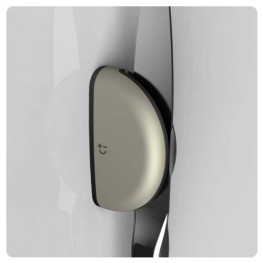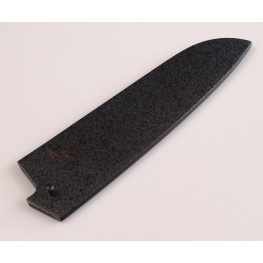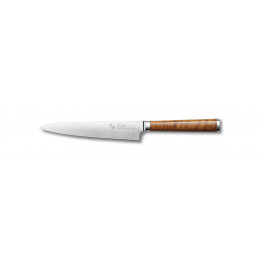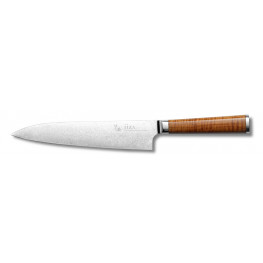Product detail

Coreless Multilayer Blade 2313
As the name suggests, this is a coreless multi-layer blade design used by very few manufacturers. For example, we can find it on knives Zanmai Ultimate Aranami. In the classic Damascene, Ni Mai (two-layer) and San Mai (three-layer) blades, the cutting part forms the core, which is forged from very hard and high-quality steel. It is also called core steel and represents the most expensive material on the knife. Softer and significantly cheaper steel is used on the sides of the core. The coreless construct consists exclusively of expensive core steels. In our case from VG-2 and VG-10 from a local steelwork. These two noble materials are folded and together form a 71-layered sandwich. The result is a very strong blade and an extremely sharp blade with long life. The edge is symmetrical in the shape of the letter "V" and reaches a hardness of 61 HRC. The aesthetic aspect of the coreless blade is also significant. The individual layers on it danced with playful ripples in the spirit of suminagashi.

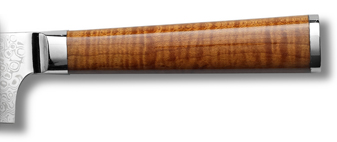
With such a product, the emphasis is on every detail. An elegant oval maple handle is fitted behind the wrought iron bolster. Its interesting light brown texture is lacquered to a high gloss. The knife is balanced by a stainless steel teilpiece on which the logo of the "iiza" consortium is engraved.
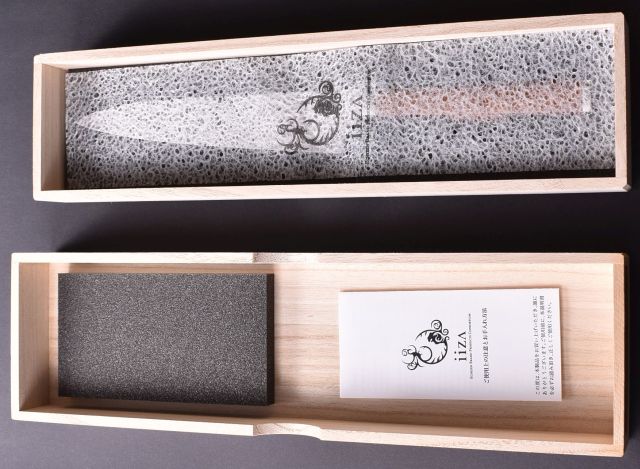
Such a rare product must be properly packaged. How else if not traditionally? The wooden kirbako box is made of Japanese hinoki cyprus. To make the excitement of detection as long as possible, the contours of the knife gently shine from under the traditional handmade washi paper, of course with the consortium logo. Washi paper has also been applied to the top cardboard, which protects the wooden cassette.
Knives are unique not only in material and workmanship. The fact that these are the last pieces available to the "iiza" consortium also contributes to their exclusivity. If you want to own this exclusive piece, there is not much time left.
©2019 Copyright Roman Ulík, Nippon Knives, www.japonskenoze.sk all rights reserved.
Photographs and texts are protected by copyright law and their use without the author's consent is not possible.
About producer

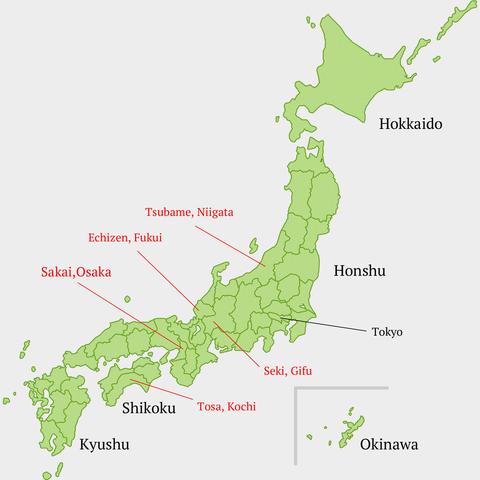
Those who are not on the Nippon Knives site know for the first time where the best knives are made in Japan and why. These are areas with more than 700 years of tradition, so it is not surprising that the most famous producers are located there. We bring our customers knives from centers such as Seki, Sakai, Tsubame and Tosa and it's time to introduce the last one /of course not in terms of meaning/ - Takefu.
At the end of the 19th century, a reorganization of the administrative division of the country took place in Japan , during which, among other things, the names of many places and areas were changed. However, some Japanese people use native names, especially when certain localities have a long tradition of craftsmanship. This is also the case of the city of Takefu. It is its historical name, today it is called Echizen and belongs to Fukui Prefecture on the island of Honshu.
Now we would like to mention Takefu a little more extensively, as he certainly deserves it.
We have to start in the Nanbokučo period /1336 – 1392/ when two imperial courts existed in Japan at the same time. North in the city of Kyoto and South in the city of Yoshin. The emperors waged a 50-year war with each other, and in the end, Kyoto enjoyed overall victory. During this period, the famous swordsmith Kunijasu Chijozuru worked in the city of Takefu.Considering the length of the battles between the rival emperors, he certainly had no problem selling his swords. However, the patronage of the war god Area was soon taken over by the peasant goddess Demeter, and the blacksmith began making sickles and other tools needed by the local peasants. Rumor has it that the whetstone he used to refine his blades was shaped like a komain - the guardian lion of Shinto shrines. The latter instilled in him the idea that a blacksmith should make swords only as a symbol of a warrior and not swords that take people's lives. The blacksmiths of Takefu adhere to this credo to this day.
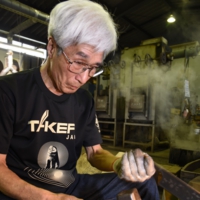
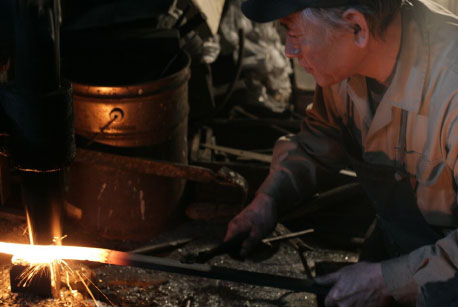
Echizen is rightfully very proud of blacksmithing. Various associations are formed there, whose task is to preserve the art of hizukuri. These are hand forgings of two different hard materials. The hard hagane steel forms the core of the blade, while the softer jigane forms the supporting part of the blade. The whole process is very demanding not only physically, but also professionally. The input multi-layer material is massive and to forge it to the required thin thickness requires direct endless forging. At the same time, it is necessary to control the temperature regimes, which the masters define by the color of red-hot iron. The result is uchihamono, from which you can directly feel the soul of its creator. A very famous association in Echizen is Takefu Knife Village, which brings together experienced masters including Katsushige Anryu.
The city is also home to one of the most important suppliers of knife steel in Japan - Takefu Special Steel Co.Ltd. This steel mill is now well known for its iconic VG-10 cobalt steel.
Another "guardian of tradition" is the Echizen Brand Products Consortium, which covers important local crafts. Through gradual evolution, this consortium was transformed into the "iiza" association. This name was created by combining two Japanese words: "ii" - good and "za" - gathering. It is the historical name of markets in ancient Japan. They called a meeting of artisans and merchants, where the best local products were presented, a good gathering. "iiza" has preserved this tradition and today brings us top products from the Takefu area. Of course, we are most interested in knives, so let's take a closer look at them.
"iiza" in its section Hôtcho /kitchen knives/ brings some really interesting pieces. Three-ply San Mai knives with acorn handles, 33-ply Damascus knives with walnut handles and 71-ply Coreless knives with maple handles. Nippon Knives brings you the most exclusive that "iiza" has to offer.
©2019 Copyright Roman Ulík, Nippon Knives, www.japonskenoze.sk all rights reserved.
Photos and texts are protected by copyright law and their use without the author's consent is not possible.


 Sign in
Sign in Registration
Registration


















